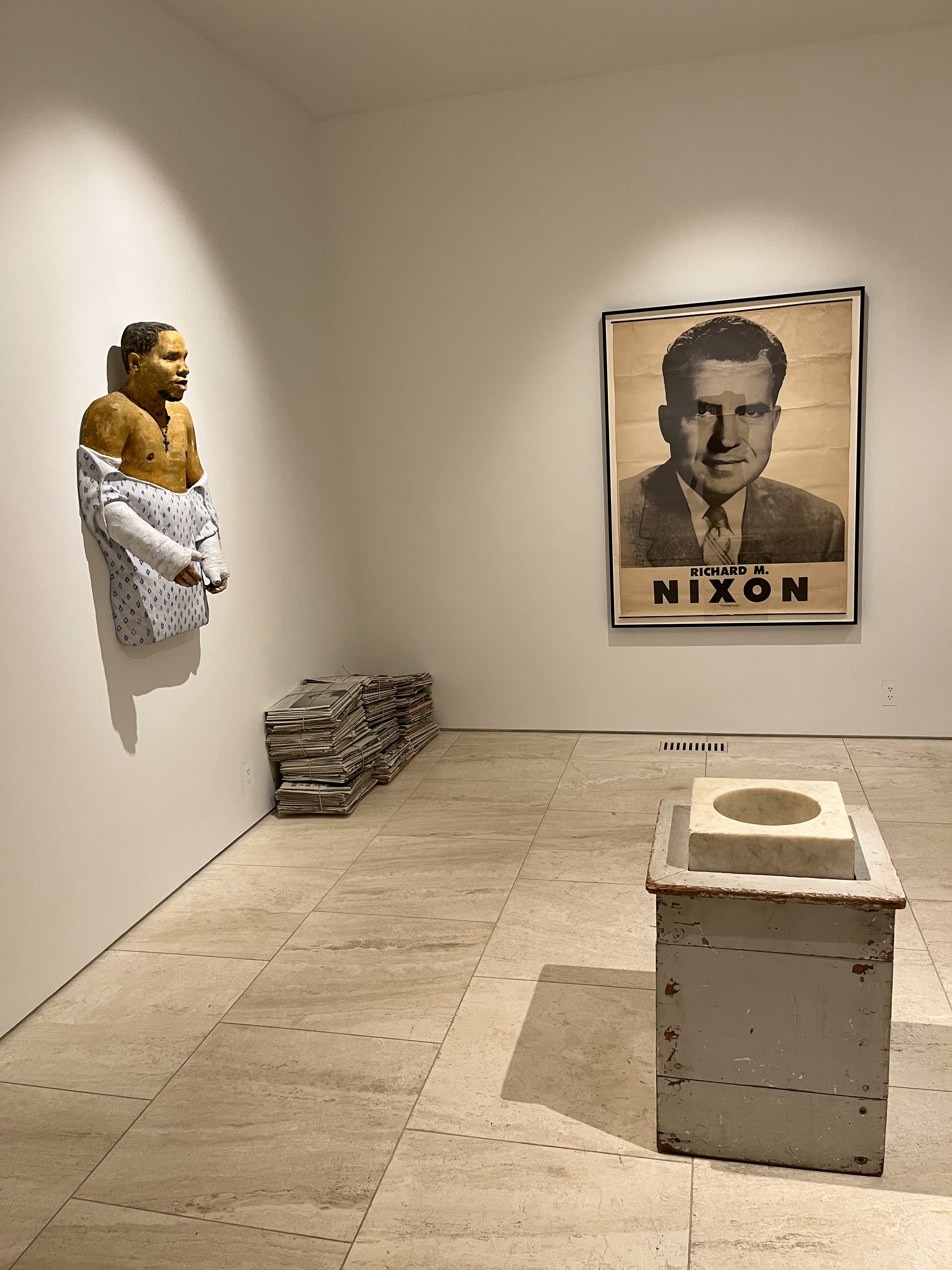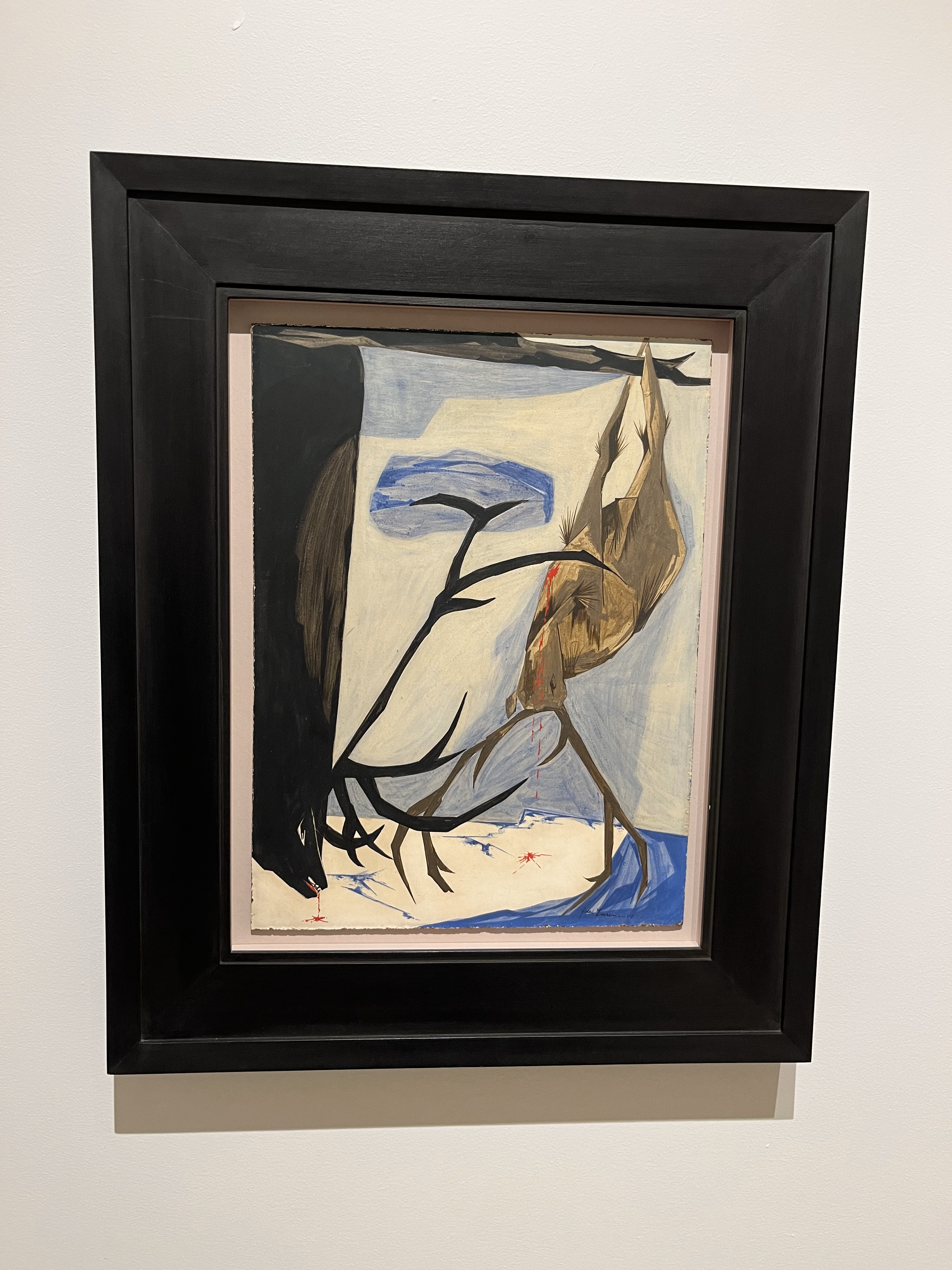Gossip in Gober Country
Robert Gober at Demisch Danant
September 7 – October 21, 2023
“Cows at a Pond,” on view at the New York outpost of the French design gallery Demisch Denant, is both a singular work of art by Robert Gober and an expansive group exhibition curated by the artist. On display are artworks, objects, and ephemera from Gober’s personal collection, claiming over 150 years of cultural production. Together, these objects present an obsession with the American mythmaking machine.

Throughout the exhibition, political memorabilia are shown alongside his own works and that of other distinctly American artists: Bruce Nauman, Jacob Lawrence, Stuart Davis, Elaine de Kooning, Diane Arbus, and John Ahearn, among others. His turn toward archival materials is not to claim it as autonomous art, nor from an interest in a research-based approach that elevates fact or truth. Gober’s interest, rather, is in narrative-building, and his curatorial approach collapses artworks and cultural tokens so that their significations are able to rub up against one another and produce anew. The show is a bit like gossip, where objects speak and their words bounce off each other and turn into something different, a used-up version of the original. In this version, the shadows of historic American moments and figures are outlined, symbols of allegiance as a kind of opium.
The show begins with a paper sign taped to the gallery door advertising ACT UP’s Auction for Action in 1990. The copy was written by Gober’s partner, artist Donald Moffett, whom he met at the advertised AIDS benefit, if the gossip is true. The sign reads, “Call The White House…Tell Bush we’re not all dead yet.” Gober’s art implicates death, faith, secrecy, and homoeroticism — likewise in his personal collection. His morbid longing for the sensational at all costs is emphasized in “Cows at a Pond” through the act of oscillation: the dead juxtaposed with innocence, the pious with the pagan, the dramatic with the milquetoast. Gober inaugurates the show with ephemera from his personal life (the night he met his husband), that is also representative of one of the deadliest epidemics in American history. From the moment you walk in the door, you’re in Gober Country.

Dotted throughout each gallery is an inculcation of presidents and their materials, arousing the great mythologies of the cyclic rise and fall of America. Included is a portrait of George Washington; a drawing of sailboats by John F. Kennedy (Sailboat Sketch, c. 1961); a larger-than-life campaign photograph of Richard Nixon; and a January 6, 2021 “EMERGENCY NO PARKING” street sign from Washington, D.C. — “Reason: First Amendment Activity.” Closing the show is a lilac wallpaper that Gober recreated from Eleanor Roosevelt’s cottage, a use of pastiche that deploys the floral symbol of hope and rebirth in ironic relation to the deviants — like the closeted bisexual First Lady — otherwise invoked in Gober’s telling.
Appropriation indeed appears in different forms. Dotting the installation are Gober’s manipulated newspapers, which he reprints with imperceptible text edits. The newspapers include stories of murder, self-inflicted bodily mutilation, and one headline, repeatedly bundled up in the parcels from a supposed 1992 copy of the New York Times: “Vatican Condones Discrimination Against Homosexuals;” subheader: “Concern that gay rights threaten marriage.” Next to an oversize Nixon poster hangs a John Ahearn painted plaster bust, Lazaro (1991), of a Black man wearing a hospital gown with broken arms. Ahearn is another controversial figure, a white sculptor made famous by his public art depicting primarily people of color in the South Bronx. He’s an artist who would be socially annihilated by today’s politics (see Dana Schutz in the 2017 Whitney Biennial), but was and is still celebrated, as in Gober’s perverse pleasure garden. Another work, a Jacob Lawrence painting, Trappers (1956), depicts a brown and black buck caught in a hunter’s trap, hung upside down from a tree. Significations of systemic violence are so prominent that Gober’s message can approach that of an expository journalist, beating his audience on the head.

But Gober’s collection is too obsessively cultivated, its meaning too idiosyncratic. It is plucked from the annals of time by an artist traipsing niche auctions, antique stores, and, born in the baby boomer generation, perhaps gathering primary sources himself. As much as Gober appears haunted by a dark patriotism, a knowingly unhealthy loyalty, so too does he do the haunting — in his art, in his studious accumulation, and in his cynical curation. America is God and Gober is the prodigal son, defying and scorning the father yet always returning home.